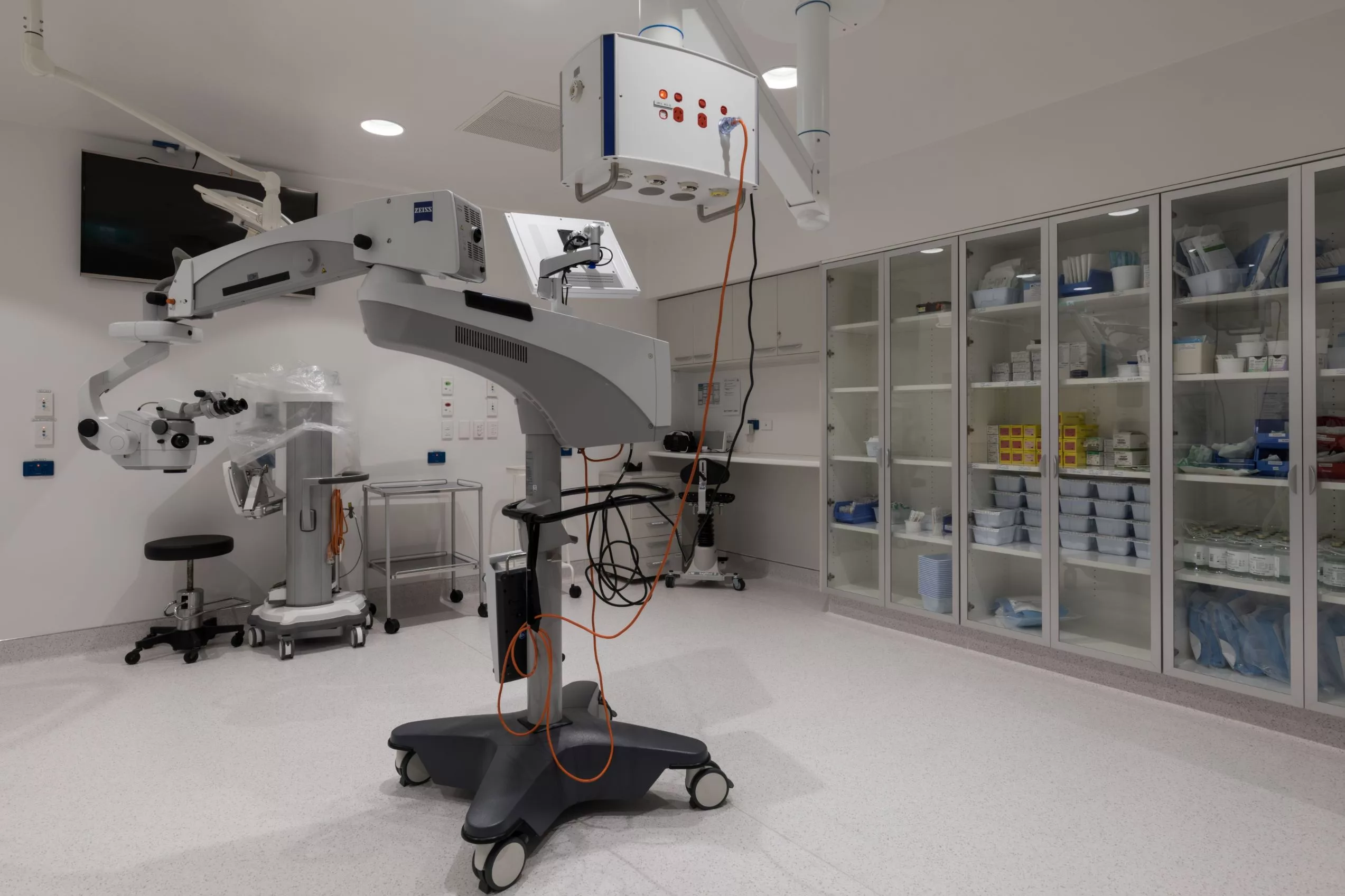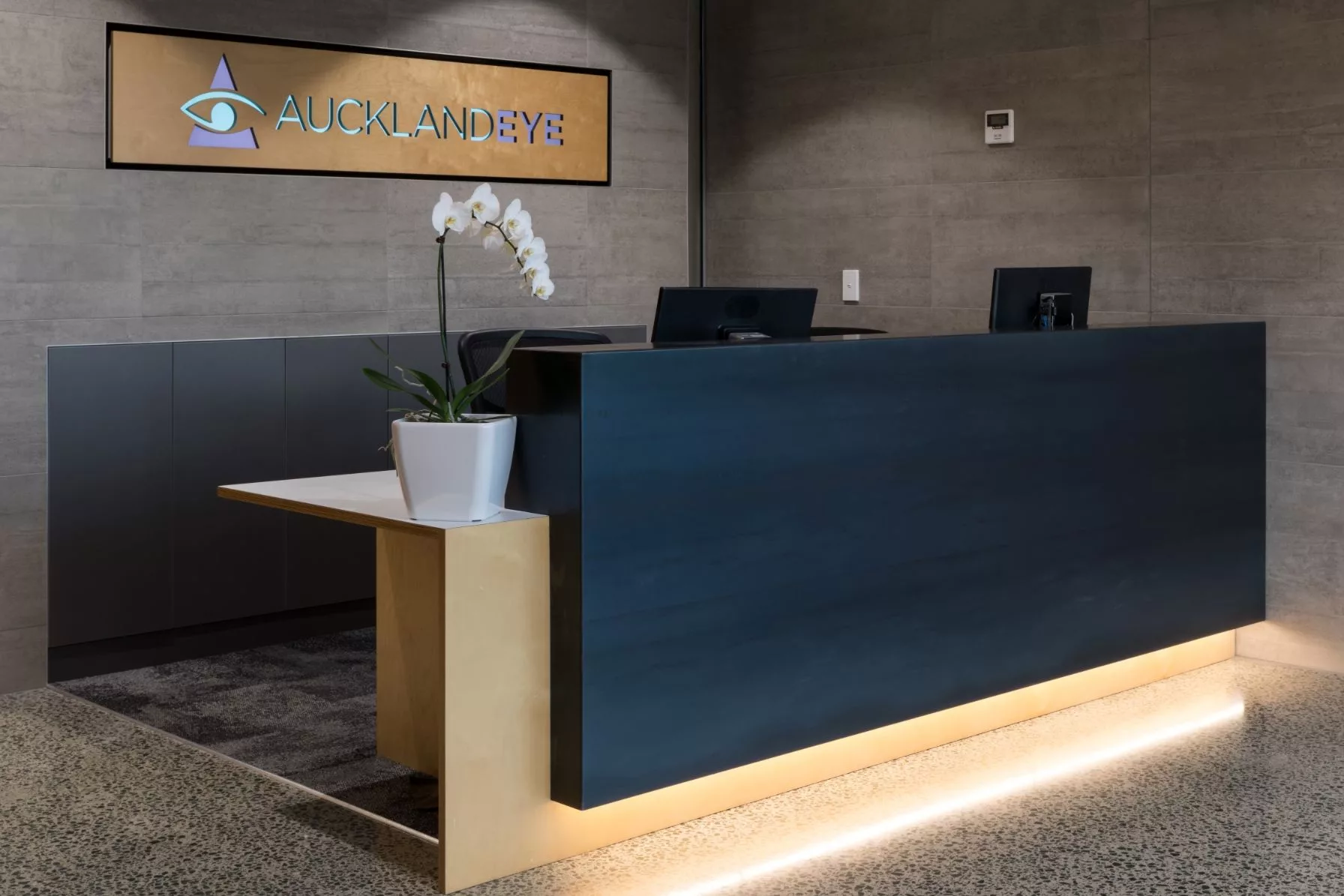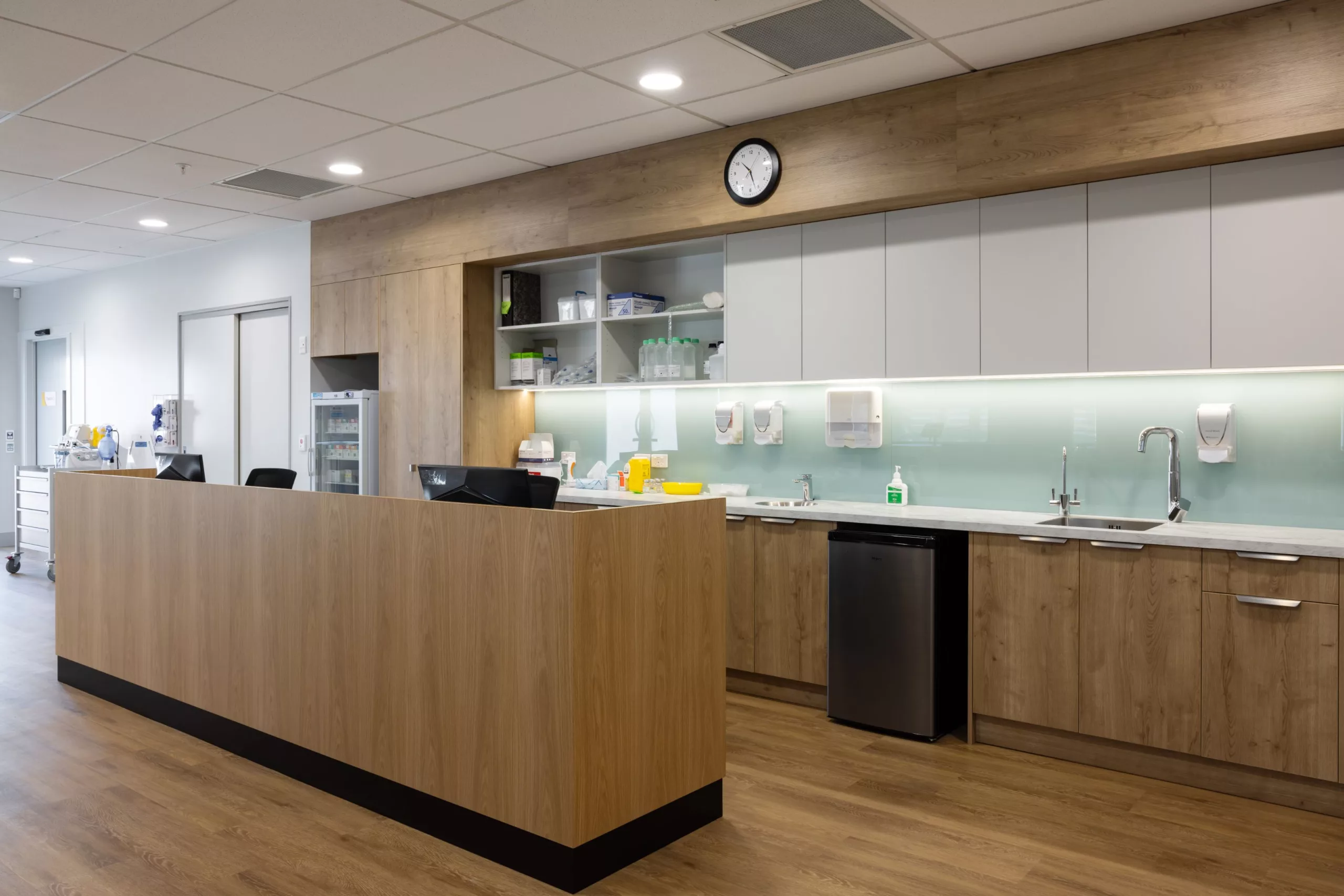The Best Flooring Types For A Medical Facility!
Does your medical facility flooring look tired, and in need of an upgrade? Do you want new flooring, but are overwhelmed by the amount of options available?
We get it.
It’s not an easy choice. Not only must your flooring suit the ‘look and feel’ of your facility, but it also must be durable and hygienic to withstand high traffic and frequent cleaning.
So what should you choose?
Vinyl Flooring: A Spill-Friendly Flooring Solution

Vinyl is an excellent choice in a space where cleanliness is paramount. In addition to coming in a vast range of styles, its impervious properties make it easy to clean and perfect for use in spaces where spills may occur.
It can also be continued onto the walls by at least 100 mm to create coving. Coving the vinyl up the walls reduces the opportunity for dust and grime to build up at the edges of the room. It also provides a skirting detail that is resistant to rubbing and knocks from portable devices and trolleys.
We recommend installing vinyl in regularly cleaned areas such as treatment rooms, kitchen areas, sterile departments, washrooms, and corridors that will be used frequently by surgical staff to transport medical equipment.
Keep in mind that, although vinyl is durable, it can deteriorate with frequent cleaning, so consider applying a protective coating in high-wear areas, in addition to following care and maintenance instructions from the supplier.
There are several great vinyl providers. To get a better feel of the options available, check out the ranges of Polyflor, Inzide Commercial, and Belgotex.
Tip: Get creative with vinyl! You can use different colours/types to indicate sterile areas and show where a higher level of disinfecting is required. Also, vinyl is great for wayfinding in corridors, as it can be installed in another colour to create a ‘pathway’ to guide patients and staff to certain areas.
Carpet Tiles: Softening the “Clinical” Look and Feel
Carpet tiles are often used in spaces like the reception area to give the area less of a ‘clinical’ feel. Their acoustic properties assist in providing a calming environment for patients, aiding in reducing reverberated noise from foot traffic.
With their solution-dyed nylon pile composition, carpet tiles are also easy to clean and can be easily replaced if they become damaged. Consider using carpet tiles in reception areas, consult rooms and general-use corridors.
 However, carpet tiles can store and hide unwanted dirt and grime from foot traffic. Not only is this unhygienic, but the grit trapped within the carpet fibres can further wear down the carpet and lower its durability. Dirty carpet tiles also can significantly lower the air quality of the facility, as they can trap pollutants and allergens. A cleaning and maintenance program is the best way to reduce this, as well as a professional deep clean twice to four times annually.
However, carpet tiles can store and hide unwanted dirt and grime from foot traffic. Not only is this unhygienic, but the grit trapped within the carpet fibres can further wear down the carpet and lower its durability. Dirty carpet tiles also can significantly lower the air quality of the facility, as they can trap pollutants and allergens. A cleaning and maintenance program is the best way to reduce this, as well as a professional deep clean twice to four times annually.
Also, since few people wipe their feet when entering a commercial building, installing an entrance mat with a minimum length of 4 metres can be effective at keeping carpet tiles clean. Their tough and absorbent qualities mean they can be inset into the floor to catch visible dirt, as patients and staff enter and exit the facility.
Have a look at the range of carpet tiles from Inzide Commercial and Belgotex to compare the options best suited for your facility.
Tip: Choose carpet tiles with colour in mind. Since they can hold dirt, consider a darker colour or patterned finish where necessary.
Ceramic Tiles: A Versatile Option with a Grouting Concern
Ceramic tiles are perhaps the most resilient flooring option that can add texture to your space with contrasting tile and grout lines. The tiles are non-absorbent and easy to clean, making them a popular choice in domestic bathrooms. Larger tiles are recommended as they make the space feel more spacious and reduce the amount of grout exposed, making cleaning easier.
However, grout is the leading concern when installing ceramic tiles in a medical facility. Grout is porous and can hold moisture, leading to mould and bacteria growth. Over time, this dirt and grime can become ingrained, making it difficult to clean thoroughly.
To maintain the highest level of hygiene and comply with New Zealand Health standards, tiles should be laid with epoxy grouting, which is plastic and does not stain, crack, or absorb moisture like regular cement grout. This solution is effective but significantly more expensive, potentially costing three times more than vinyl for the same level of cleanliness. Epoxy grouting must be carefully installed to avoid grout haze, which can leave a dirty-looking residue on your floor.
Tip: If tiles are your thing, consider installing anti-microbial tiles. Thanks to a special oxidization process, these specialist tiles have unique properties that actively fight around 99.9% of microbes. Cleaning them is still required—but your cleaning will be more effective.
Tip: Anti-slip coatings are available for tiles but avoid choosing a lighter tile colour if you plan to apply one. These coatings are designed to be ‘sticky’, and thus attract and show dirt more easily.
Polished Concrete: Style vs Safety

Lastly, polished concrete is a viable choice for cleanliness. Like vinyl, it has a smooth surface that discourages water absorption and bacterial growth. It can also be even more durable than vinyl—albeit slightly more expensive.
However, it does come with downsides. Being a natural product, polished concrete is susceptible to cracking. These cracks could disrupt the smooth seal of the concrete, allowing it to harbour harmful pathogens. In medical settings, this can present a potential risk.
While polished concrete is considered safe when dry, there are still concerns about slipping in wet environments, such as near sinks or in bathrooms. Using entrance matting before polished concrete can help reduce risk as it can trap moisture from foot traffic, although be mindful of the timing of your floor cleaning program to minimise slip risk.
Tip: Black Oxide can be mixed into concrete before it is poured to give it a darker finish!
Summary:
1. We recommend using both carpet tiles and vinyl, with the ratio depending on your individual needs and facility type.
2. Carry out regular cleaning/maintenance programs – including deep cleaning the carpet.
3. If you prefer a tiled floor—epoxy grouting and anti-microbial tiles are best.
4. Polished concrete can be used, but consider risks from slipping/cracking.
5. Choose colour carefully to compliment your cleaning program.
Q) What type of vinyl should I choose?
Above, we discussed why vinyl is one of the best flooring surfaces to install, especially if you consider the cost. So, what type should you choose? There are many vinyl types, but Homogeneous and Heterogeneous Vinyl are the main types to compare.
 Homogeneous Vinyl
Homogeneous Vinyl
Homogenous vinyl is made from chips of a PVC compound poured into and compressed into a mould to create a single-layer sheet. Hence, it is durable, stain-resistant, anti-bacterial, and water-proof. This water resistance makes it especially ideal for heavy-duty cleaning and disinfecting—which can require a dwell time of the disinfectant of up to 15 minutes to eliminate harmful microbes.
Heterogenous Vinyl
Another vinyl option is multi-layer vinyl—also called heterogeneous vinyl. This type of vinyl is designed for areas that are less frequently cleaned or have lower traffic, as the layers tend to wear down more quickly than single-layer vinyl. While single-layer vinyl consists of a single thicker layer, heterogeneous vinyl contains multiple thinner layers, like a cake.
These typically include a backing layer, a UV layer, a glass-fibre layer, and a wear layer with a printed finish on the top. This finish means the top layer can become damaged or scratched when cleaned often, and its overall durability is slightly lower depending on the thickness of the top wear layer.
There are hospital-grade heterogenous options designed to cater to more traffic and regular cleaning/disinfecting. If choosing a multiple-layer vinyl, look for a wear layer of at least 0.5mm and a waterproof rating. A thicker wear layer will mean the vinyl will not appear worn in frequently cleaned spaces.
Also, weigh the personal benefits you will receive from vinyl planks and tiles when compared to single-sheet vinyl. We would recommend single-sheet vinyl to ensure maximum water resistance, although planks and tiles can easily be replaced if they become dented.
Summary:
1. Single-layer vinyl is generally better for cleaning. However, if choosing single-layer vinyl, ensure to check the thickness of its wear layer.
2. Sheet vinyl is more likely to be fully waterproof, but vinyl tiles are easier to install—and replace, if needed.
We hope this blog has answered your questions about flooring in your medical practice.
If you have any questions about this article or medical fit-outs in general, Contact Us today!
Interested in starting your own medical facility? Check out our article on what to consider when investing in your own medical start-up.
